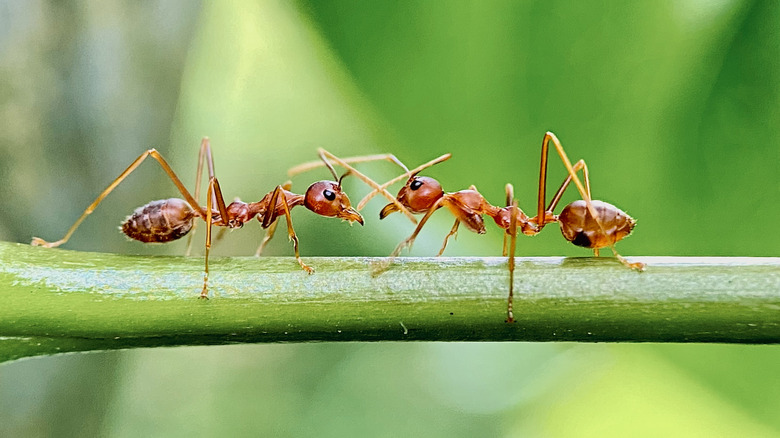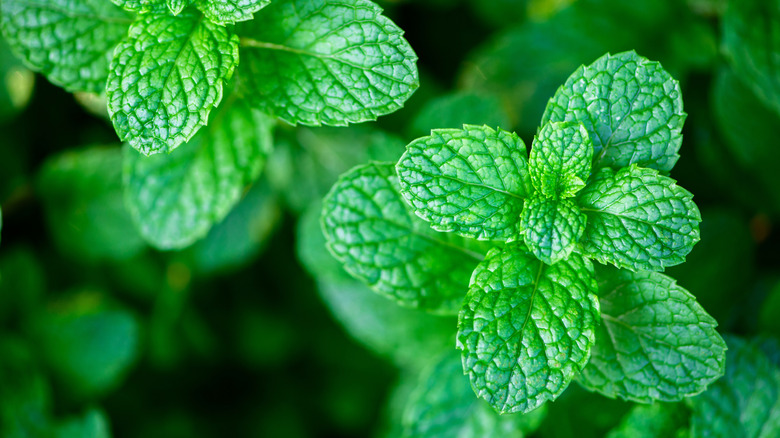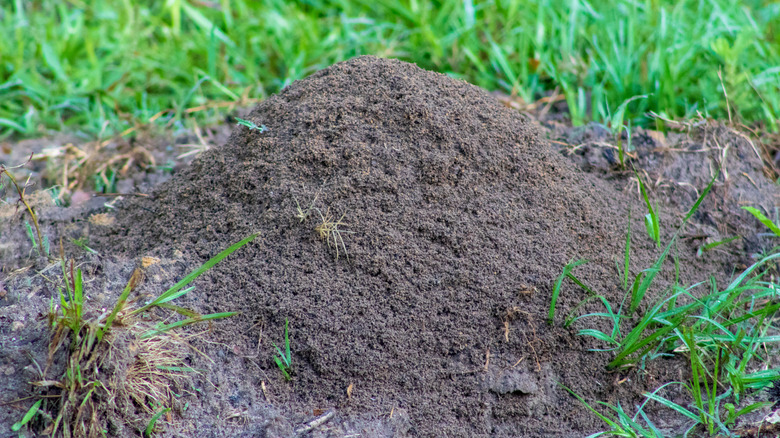Naturally Deter Fire Ants From Your Yard With The Help Of A Fresh-Smelling Herb
Ants are an annoying enough pest when you find them crawling onto your picnic blanket or nesting in your yard, sometimes wandering into your kitchen to find food or shelter. But some species can do a lot more damage. For example, carpenter ants regularly burrow into wood to build their colonies, which migh lead to structural failures across your home. Meanwhile, fire ants are particularly aggressive stinging insects that could cause itchy pustules at a minimum or, at worst, lead to swelling, chest pain, and trouble breathing in those who are most vulnerable to their venom. Black imported fire ants from South America were first reported in Alabama in 1918, while red fire ants appeared across the southeast in the 1930s. Though these pests continue to spread across 15 states from southern California to North Carolina, there is one easy tool in your arsenal that should help tackle infestations: Try using mint, such as spearmint (Mentha spicata), to deter fire ants.
A 2004 study published in the Journal of Economic Entomology found that leaving peanut shells or granules soaked in 2% mint oil around red imported fire ant colonies for just two hours led to an 80% worker ant mortality rate and total relocation. It seems the strong aroma of mint is its main repellent property, which also makes it effective against pests like mosquitos and cabbage moths. The University of Florida's Institute of Food and Agricultural Services suggests mint alongside other essential oils to keep pests at bay, such as clove, garlic, or rosemary. Mint is also an easy crop to grow from home that requires just a bit of maintenance to stay healthy, so you can start your fire ant repellent at any time.
How to grow mint as a fire ant repellent
Whether you're growing spearmint to cook or to repel fire ants, it will thrive in USDA hardiness zones 4 through 9; this means the herb is widely accessible to just about everyone in the contiguous United States. Mint is a great addition to most any yard and garden, especially if you're looking to attract pollinators like butterflies. Just be aware that mint may be dangerous for some outdoor pets like cats.
You'll want to use moist soil that has good drainage and a lot of organic matter, ideally with neutral pH levels. Full sun conditions are also good for planted mint. In fact, beyond your yard, it's probably worth considering your kitchen windowsill as a spot to grow it, as you'll be able to reach for fresh herbs at any time while also repelling insects like fire ants from one of the most enticing entrances to crawl through for access to food and water. This herbaceous perennial will grow very quickly in the right conditions, which means you'll be on your way to tackling fire ants and other pests in no time. Its fast-spreading nature is also a downside to growing mint you should be aware of, though, as it can get out of hand in no time. You'll want to monitor it frequently and use controls, like putting pots in the ground as root barriers, to keep the mint contained to those areas where you're trying to repel fire ants.
Methods to ward off fire ants alongside repellents like mint
Fire ants have been a problem in the U.S. for some time now, but globalization has also made the United States a major source of fire ant infestations in countries like Australia, China, and New Zealand. Luckily, fire ants are one of the most prevalent lawn invaders, so there is plenty of research into controlling these pests. Repellents like mint might be effective at causing fire ants to clear out their mound, but if you don't hit them all, there's a risk that smaller, hidden mounds will thrive with less competition. Supplement this solution by spreading broadcast fire ant baits across your lawn in the spring (around holidays like Easter), as these slow-acting insecticides will be fed to larvae and eventually spread throughout the colony.
There are physical treatments for fire ant mounds that you can try when they're gathered near the top on cool mornings, including drenching the mounds in fire ant-toxic essential oils like mint. Pouring 3 gallons of scalding hot water into a mound is often an effective way to kill off its inhabitants, though you'll have to be careful not to burn yourself or any plants surrounding the fire ant infestation. You could also excavate the mound with a shovel and bucket, ensuring you use talcum or baby powder on your tools so the fire ants can't crawl out. These are just a few of the best ways to get rid of fire ants, but a healthy supply of mint is always worth keeping in mind as an extra repellent around fire ant hot spots in the yard and entry points.


